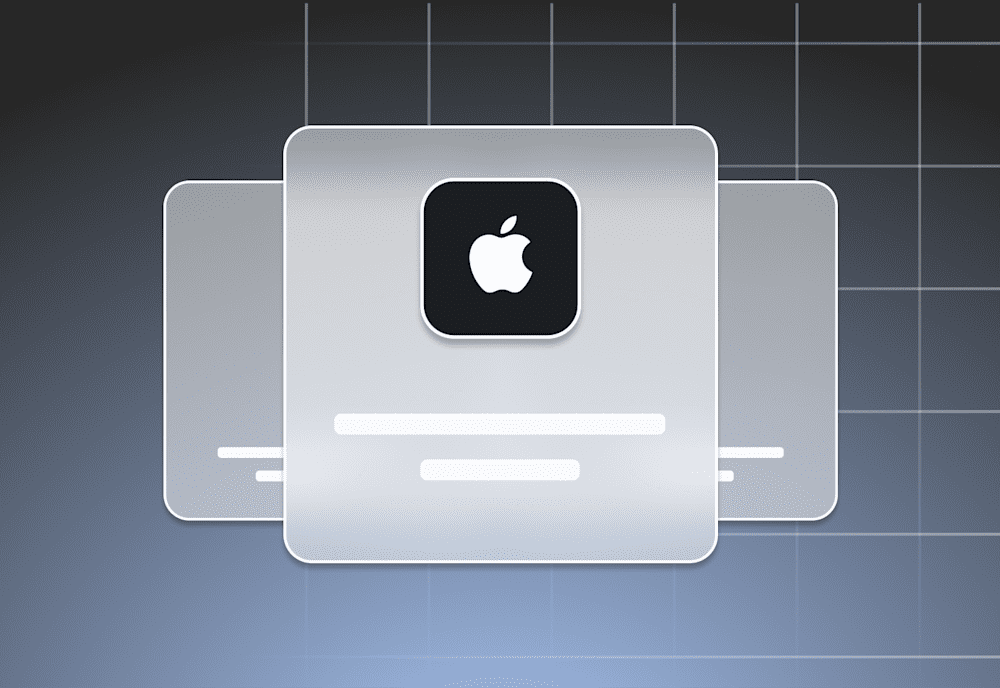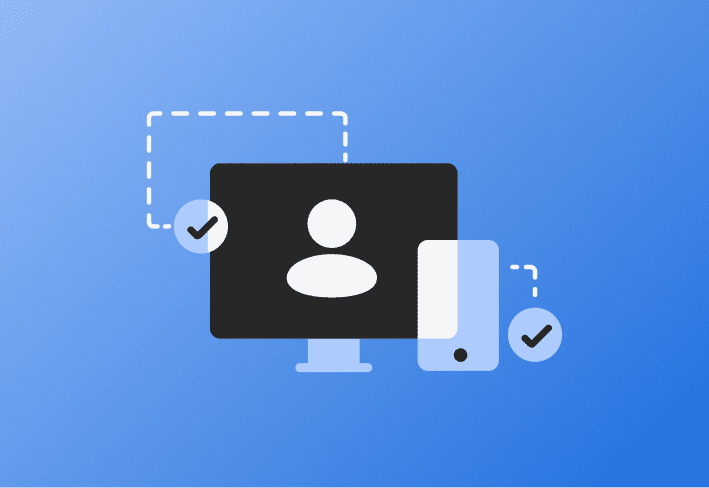A number of factors affect whether a Mac or PC is more suitable for a particular work environment, fueling the unending Mac vs. PC debate. When it comes to price, however, most experts point to a clear winner: the Apple Mac.
We know what you’re thinking: “But wait! They’re twice the price of a Windows PC!”
But at the seventh annual Jamf Nation User Conference in 2016, IBM’s VP of Workplace as a Service, Fletcher Previn, outlined how switching to Mac had saved the company a staggering $535 per machine over 4 years.
That’s because the total cost of ownership (TCO) is the sum total of all the direct and indirect costs associated with owning a piece of hardware. Several factors go into the total cost of ownership, from the cost of purchasing the machine to its resale value.
We’ll break down what factors make up the TCO for an Apple computer compared to a PC, and we’ll cover other criteria to help you choose the Mac or PC as your official business computer.
Acquisition
A computer’s price tag is the most obvious and immediate cost associated with the total cost of ownership. This goes beyond the price of the physical computer itself. Also consider the phone systems, switches, routers, and even the security appliances you’ll need to run your system efficiently. On top of the cost of hardware, you’ll also need to consider the costs of installing your specific hardware configuration as well as any possible customizations your system requires.
In general, Mac hardware falls toward the middle of the average price range, while a Windows machine may be budget friendly, high end, or anywhere in between. Here’s a rundown of what you can expect to pay on any given piece of hardware:
Desktops
iMac: Starts at $1,300
Mac mini: Starts at $600
Mac Studio: Starts at $1,999
Mac Pro: Starts at $6,999
Windows desktop computer: $500 to $3,500 depending on specs
Laptops
MacBook Air: Starts at $1,000
MacBook Pro: Starts at $1,600
Windows laptop computer: $300 to $5,000 depending on specs
Note that prices vary greatly depending on the processor. Expect models with a high-end processors to cost extra. However, high-end processors can also handle more advanced processes, such as video editing or gaming. Go even higher-end, and you can tackle heavy-duty tasks, like machine learning and artificial intelligence training. In the table below, we'll break down some of the common, current processor options.
Apple | PC |
|---|---|
M1 | Intel Core i3 |
M1 Pro | Intel Core i5 |
M1 Max | Intel Core i7 |
M2 | Intel Core i9 |
M2 Pro | Intel Core Ultra Processor |
M2 Max | AMD Ryzen 5 |
M2 Ultra | AMD Ryzen 7 |
M3 | AMD Ryzen 9 |
M3 Pro | AMD Ryzen Threadripper |
M3 Max |
Machine configuration and implementation
While every Apple product comes complete with a copy of macOS plus the licensing you need to operate your machine, the same can’t be said for a personal computer. A PC user must purchase the operating system (most likely Windows OS) and various other third-party solutions separately, including encryption tools and antivirus software.
Mac users may incur additional costs if they choose to deploy Microsoft Office in lieu of Apple’s standard apps; however, Microsoft Office’s price is standardized across platforms, making it a fairly even trade-off. Mac’s Automated Device Enrollment (ADE) (in conjunction with Apple Business Manager) automatically enrolls a new corporate-owned device and loads it with additional settings and apps.
In 2020, Apple introduced its Apple M1 chip, designed to increase performance and power efficiency. The chip also made iOS and iPadOS apps compatible with iMac and MacBook for the first time, allowing a Mac user to run virtually any app on any Apple device. In an Apple-commissioned report from Forrester, findings concluded that the M1 Mac would save business users approximately $843 per machine compared to a PC. While research is lacking on ultimate cost of M2 and M3, we would expect this trend to continue.
Admin and support
Admin costs make up one of the biggest differences between the total cost of ownership between Macs and PCs. Admin costs include the cost of help desks, systems administrators, device management solutions, and analysts needed to maintain and troubleshoot your system. The more help desk tickets your system generates, the more you can expect to pay for system administration and maintenance.
In addition to the number of help desk tickets generated, the type of ticket can also contribute to the overall cost of ownership. For instance, after deploying roughly 100,000 iMacs at IBM, Previn shared that only 3.5% of Mac users submitted help desk tickets each month compared to 25% of PC users. Moreover, only 5% of the support tickets generated by Mac machines required in-person attention, while 27% of PC support tickets required in-person attention.
That said, while support tickets may be less frequent for Macs, they’re often doozies. You may need extra hands or Mac-specific expertise. For example, Apple prefers Wi-Fi 6E networks. If your access points support Wi-Fi 6E, great! If not, you have our sympathies for the hours it may take you to get your Macs back on the corporate Wi-Fi.
Machine lifespan
The average computer can be expected to last at least 3 years regardless of its brand. With proper maintenance and care, the average computer can last anywhere between 5 and 8 years. The longer a machine can perform optimally, the less a company has to spend on replacement parts or new machines.
The longevity of Macs vs. PCs can depend on the specific model, the frequency of use, and the maintenance of the system. Most experts agree that the average Mac computer can operate optimally for approximately 6 to 8 years, while the average Windows device is best retired around 4 years. Windows computers may also vary more in their life expectancies due to differences in quality between the plethora of PC manufacturers.
Retirement
Even after you decide to retire your device, it can incur sizable costs. Exporting data, archiving systems, covering warranty costs, and paying for unused or inactive licenses can all add up. You should also factor the depreciation of the machine over time into its overall cost of ownership. This includes its potential resale value should you choose to participate in a buyback or trade-in program.
Mac’s reputation and brand recognition play a large role in its substantial resale value. Historically, the demand for a used Mac device is much higher than that of a desktop PC, making resale and trade-in much more feasible options. And while PCs tend to lose functionality over time, the controlled Apple ecosystem and security advantages offer more longevity than a PC’s piecemeal configurations.
Mac vs. PC for business FAQs
Do businesses use PC or Mac more?
As of 2024, Windows PCs still hold the lion’s share of the global desktop market with around 70% of total users according to Statista. However, Mac’s usership has nearly doubled in the past decade.
Are Macs or PCs more secure?
Historically, Macs are more secure because of their UNIX-based Mac operating system and more limited usage. That said, the threat of malware is not exclusive to the Microsoft Windows operating system. More and more cybercriminals develop malware to target Apple devices, so even a user’s Apple mobile device could be at risk.
Do Macs or PCs offer a better user experience?
Most users just prefer the device they’re more familiar with. A long-time Windows user will probably prefer the overall experience of a Windows computer, while a committed Apple user will likely favor products in that ecosystem.
Are PC and Mac hybrid environments the ideal compromise?
While users may be happy to get their pick of devices, managing hybrid environments is more complicated — much more complicated. Compatibility issues could arise, and you’ll likely need to manage PCs and Macs separately to get the level of control and visibility you need.
That said, with BYOD policies increasingly common, hybrid environments are the new norm. Thankfully, Apple devices have a built-in framework designed to make device management less difficult.
Depending on your business needs, goals, and priorities, either Macs or PCs could be a better fit for you and your employees. But when it comes to the overall computer cost comparison, Macs are usually the more affordable option. One deterrent that many businesses face when making the switch is how to manage Apple devices. Luckily, Apple MDM doesn’t need to be complicated. See for yourself with a free 30-day trial of SimpleMDM or learn more from the SimpleMDM blog.


